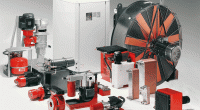Welding: The Importance of Welding Helmets
Unlike in the past when only blacksmiths could join metals with their tools, we have a lot to be thankful for nowadays, as with the help of technology, there was the appearance of a new metal joining method, called welding.
Taking into account just how advanced this metal fabrication process is and its seamless results, over other processes of the sort, it’s present in many branches of science and engineering, like the building of ships, spacecraft, planes, atomic power plants, automobiles, railway carriages, including metal art, and home DIY projects.
Since it requires working with welding machinery, one can expect there to be certain risks particularly as there’s exposure to sparkling, electric shocks, skin burns, flying metal debris, and toxic gases, which is why PPE is so important. Some of the basic and most important pieces of PPE are the welding helmets.

Unlike previous models of face shields, like the hand-held, passive one requiring the welder to lift it every time when in need of checking the weld, latest types of helmets are designed to provide you with utmost protection and comfort.
Created of pressed metal, with dark screen so as not to reflect light, welding helmets can protect your eyes and skin from the damaging UV and IR rays, as well as intense blue light, all arc emitted, and sparks, there’s no question on them being your PPE priority.
Often, welders choose not to wear helmets because of not making the right choice when purchasing, and that’s a huge mistake to start with as they double their chances of retina burns and even blindness. It’s no surprise these injuries make for one quarter of the injuries of welders.
Some of the welding operations requiring full face protection due to the high light intensity are arc welding, air carbon arc cutting, and plasma arc cutting. If your welding is one of them, don’t take the helmet for granted. You can further increase your protection by wearing a combination of helmet and goggles underneath.
To make the most of the purchase, be sure to choose a helmet that’s adjustable, and lightweight, and offers a better peripheral vision, so you’d be comfortable wearing it a longer period and have a wider view over the weld. You can even opt for the auto-darkening models, based on LCD technology, that automatically darken when arc welding begins, for instance.
It’s important that you pay attention the helmet you get has distinctive markings of the class, and manufacturer, complying with Australian safety standards in terms of flame, and resistance, so you can be sure on the quality of your purchase.



